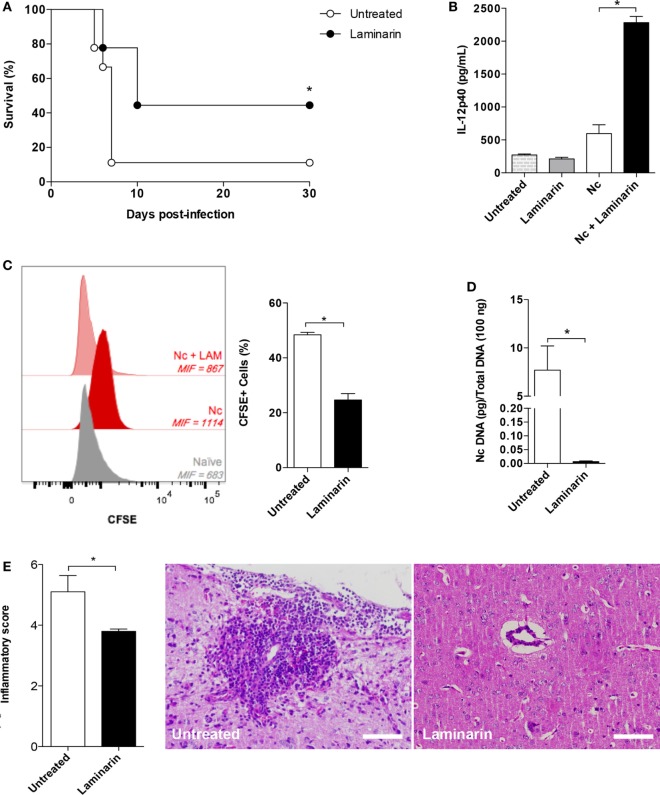Figure 3.
Laminarin (LAM) is effective in the control of Neospora caninum infection. Wild-type mice were treated or not with LAM (1 mg/kg/day) during seven consecutive days. In the fourth day of treatment, mice (treated or not) were infected (10 mice/group) with 1 × 107 N. caninum tachyzoites for survival analysis (A). Differences in survival rates between groups were compared using Kaplan–Meier, through a long-rank Mantel–Cox test. (B) IL-12p40 concentration was determined by ELISA in the peritoneal fluid of mice, at the third day of a non-lethal infection (1 × 106 tachyzoites/mice). Results were expressed as mean ± SEM and are representative of three independent experiments. *Statistically significance differences (p < 0.05), assessed by analysis of variance followed by Bonferroni multiple comparison posttest. (C) Acute parasite burden determined by the mean intensity of fluorescence (MIF) of peritoneal cells after 3 days of a non-lethal infection (1 × 106 tachyzoites/mice) with CFSE-stained tachyzoites, determined by flow cytometry (6 mice/group). (D) Parasite load in the central nervous system of mice after 30 days of infection (6 mice/group), analyzed by real-time quantitative polymerase chain reaction. (E) Mean inflammatory scores attributed to the different groups after 30 days of infection, along with representative photomicrographs of lesions found. Results are representative of three independent experiments. *Statistically significant differences (p < 0.05).

